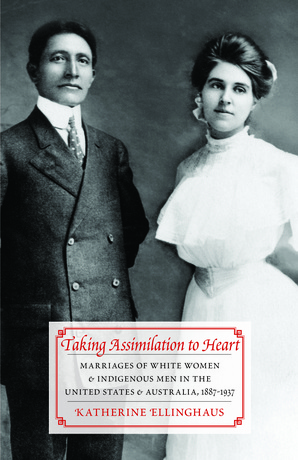The Specter of Sex: Gendered Foundations of Racial Formation in the United StatesPosted in Books, Europe, History, Literary/Artistic Criticism, Media Archive, Monographs, Slavery, United Kingdom, United States, Women on 2009-09-02 01:33Z by Steven |
The Specter of Sex: Gendered Foundations of Racial Formation in the United States
State University of New York (SUNY) Press
August 2009
323 pages
Hardcover ISBN13: 978-1-4384-2753-9
Paperback ISBN13: 978-1-4384-2754-6
Sally L. Kitch, Distinguished Professor of Women and Gender Studies
Arizona State University
Genealogy of the formation of race and gender hierarchies in the U.S.
Theories of intersectionality have fundamentally transformed how feminists and critical race scholars understand the relationship between race and gender, but are often limited in their focus on contemporary experiences of interlocking oppressions. In The Specter of Sex, Sally L. Kitch explores the “backstory” of intersectionality theory—the historical formation of the racial and gendered hierarchies that continue to structure U.S. culture today. Kitch uses a genealogical approach to explore how a world already divided by gender ideology became one simultaneously obsessed with judgmental ideas about race, starting in Europe and the English colonies in the late seventeenth century. Through an examination of religious, political, and scientific narratives, public policies and testimonies, laws, court cases, and newspaper accounts, The Specter of Sex provides a rare comparative study of the racial formation of five groups—American Indians, African Americans, Latinos, Asian Americans, and European whites—and reveals gendered patterns that have served white racial dominance and repeated themselves with variations over a two-hundred-year period.
“This gracefully written synthesis of existing historical scholarship advances a position that both asserts distinction between ‘race’ and ‘gender’ as categories and privileges the gendered process of racial formation as key to understanding power and hierarchy in the United States. It is perfect for the classroom and will serve as a guide for theorists who need grounding in history.
Table Of Contents
- Acknowledgments
- Introduction: The “Purloined Letter” of Gendered Race
- Part I: Roots As the Twig is Bent
- 1. “Women are a Huge Natural Calamity”: The Roots of Western Gender Ideology
- 2. The First Races in Society: Gendered Roots of Race Formation
- 3. Gendered Racial Institutions: World Slavery and Nationhood
- Conclusion: From Gender to Race
- Part II: Bodies Whose Too, Too Solid Flesh?
- 4. The American “Body Shop”: Gendered Racial Formation in the Colonies and New Republic
- 5. Enslaved Bodies and Gendered Race
- 6. Sexual Projection and Race: Science, Politics, and Lust
- Conclusion: Embodying Race
- Part III: Blood “Off Women Com Owre Manhed”
- 7. Defining, Measuring, and Ranking Racial Blood: The Ungendered Surface
- 8. Hardly Gender Neutral
- 9. Gendered Anti-Miscegenation: Laws and Their Interpretation
- 10. Preserving White Racial Blood: Rape Accusations and Motherhood
- Conclusion: Miscegenation as Racial Reconciliation?
- Part IV: Citizenship “My Folks Fought for This Country”
- 11. What is Citizenship?: Gender and Race
- 12. Engendering Citizenship: Dependency and Sex
- 13. “No Can Do” Men and Their Others: Dependency and Inappropriate Gender
- 14. Mixed Race, Suspect Gender: Both White and . . . Whatever
- Conclusion: Homosexual Citizenship: A Gendered Racial Oxymoron
- Part V: Implications Patterns for a New Bridge
- 15. Implications for Feminist Theories of Racial Difference and Antisubordination Politics
- 16. Gender Implications for Theories of Racial Formation
- Conclusion: Interdependence
- Notes
- Index



